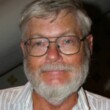Farside
Description
Six-time Hugo-Award winner Ben Bova presents Farside.Farside, the side of the Moon that never faces Earth, is the ideal location for an astronomical observatory. It is also the setting for a tangled web of politics, personal ambition, love, jealousy, and murder.
Telescopes on Earth have detected an Earth-sized planet circling a star some thirty light-years away. Now the race is on to get pictures of that distant world, photographs and spectra that will show whether or not the planet is truly like Earth, and if it bears life.
Farside will include the largest optical telescope in the solar system as well as a vast array of radio antennas, the most sensitive radio telescope possible, insulated from the interference of Earth's radio chatter by a thousand kilometers of the Moon's solid body.
Building the Farside observatory is a complex, often dangerous task. On the airless surface of the Moon, under constant bombardment of hard radiation and infalling micrometeoroids, builders must work in cumbersome spacesuits and use robotic machines as much as possible. Breakdowns—mechanical and emotional—are commonplace. Accidents happen, some of them fatal.
What they find stuns everyone, and the human race will never be the same.
"Bova's latest novel is one of his best, and a classic use of the old sf theme of humanity reaching out for immortality among the stars."—Booklist (starred review) on Farside
More Details
9781470838997
9781481592796
Also in this Series
Published Reviews
Booklist Review
*Starred Review* Bova's latest novel is one of his best, and a classic use of the old sf theme of humanity reaching out for immortality among the stars. An Earth-sized planet has been discovered circling a star 30 light-years away, at the right distance to support life. But does it? If so, is that life possibly intelligent? The answers must come from two high-tech pieces of equipment on the far side of the moon, the largest optical telescope and the largest radio telescope ever built. In the vacuum of space, seeing conditions are perfect; with the Moon blocking Earth's electronic noise, listening conditions will be equally good. Of course, there are a few problems, apart from political and personal squabbles coming in at a dollar a cartload. All the work has to be done by robots, which can malfunction at the worst possible time without careful and expensive maintenance. Vacuum is fine for optimal seeing conditions; not so fine for preventing micrometeorites from puncturing the spacesuits of workers a long way from the nearest help. Deadlines are missed. Costs overrun. Tension builds. Success seems impossible to the last moments; the moon's topography makes some scenes literal cliff-hangers. But enduring hope for humanity emerges at last.--Green, Roland Copyright 2010 Booklist
Library Journal Review
The discovery of an Earth-sized planet 30 light years from Earth sparks a race to develop a telescope to create a photographic record of the new world. The far side of the moon, with its "clear" view of space, seems an ideal location, but the project's planners must contend with rivalries from the existing moon colony of Selene. Sent from Earth to assist Dr. Ulrich, director of Angel Observatory, Dr. Trudy Yost immediately becomes involved in the web of politics, sabotage, and physical obstacles that mark life on Farside. VERDICT With his customary use of scientific facts to augment his flair for storytelling, six-time Hugo Award winner Bova (Power Play) brings to life another sf adventure about humanity's future in space. Bova's emphasis is on plot and scientific speculation, but his characters still resound with personality. The author's wide reader base should enjoy this tale of future possibilities. (c) Copyright 2013. Library Journals LLC, a wholly owned subsidiary of Media Source, Inc. No redistribution permitted.
Kirkus Book Review
Near-future science-fiction thriller, one of Bova's Grand Tour series (Mars Life, 2008, etc.), detailing human exploration of the solar system. After an Earth-like planet is detected circling a nearby star, two projects race to capture the first visual images of New Earth. On the moon's Farside, permanently facing away from Earth, a vast distributed optical telescope takes shape under Farside Observatory director Jason Uhlrich's watchful eye--figuratively speaking, since he's actually blind and "sees" by means of sound waves. Needing further sponsorship, Uhlrich has asked the filthy rich McClintock family for money, so scion Carter McClintock is now his administrative chief. Also on the staff are young astronomer Trudy Yost and dedicated technician Grant Simpson, who takes drugs to combat radiation and keep himself going so he can get the job done. Far out in space, meanwhile, the International Astronautical Authority and its wealthy backers are assembling a rival telescope. When one of Uhlrich's mirrors cracks before installation, Simpson suggests they enlist the help of nanotechnology whiz Kris Cardenas to assemble another. Uhlrich is doubtful--nanotechnology is banned everywhere except on the moon--but accedes. Then Anita Halleck gets wind of the move; she's one of IAA's backers and has vengeful personal motives to oppose the McClintocks. Soon, suspense builds as a series of inexplicable deaths makes the Farside team start to wonder if deadly rogue nanomachines are loose in the facility--which could mean curtains for the entire project. Bova carries the story forward with his usual workmanlike, technically savvy narrative, which is interspersed with background facts and biographies of the main characters. The sort of gritty, hands-on, you-are-there yarn at which Bova has long excelled.]] Copyright Kirkus Reviews, used with permission.
Booklist Reviews
*Starred Review* Bova's latest novel is one of his best, and a classic use of the old sf theme of humanity reaching out for immortality among the stars. An Earth-sized planet has been discovered circling a star 30 light-years away, at the right distance to support life. But does it? If so, is that life possibly intelligent? The answers must come from two high-tech pieces of equipment on the far side of the moon, the largest optical telescope and the largest radio telescope ever built. In the vacuum of space, seeing conditions are perfect; with the Moon blocking Earth's electronic noise, listening conditions will be equally good. Of course, there are a few problems, apart from political and personal squabbles coming in at a dollar a cartload. All the work has to be done by robots, which can malfunction at the worst possible time without careful and expensive maintenance. Vacuum is fine for optimal seeing conditions; not so fine for preventing micrometeorites from puncturing the spacesuits of workers a long way from the nearest help. Deadlines are missed. Costs overrun. Tension builds. Success seems impossible to the last moments; the moon's topography makes some scenes literal cliff-hangers. But enduring hope for humanity emerges at last. Copyright 2012 Booklist Reviews.
Library Journal Reviews
The discovery of an Earth-sized planet 30 light years from Earth sparks a race to develop a telescope to create a photographic record of the new world. The far side of the moon, with its "clear" view of space, seems an ideal location, but the project's planners must contend with rivalries from the existing moon colony of Selene. Sent from Earth to assist Dr. Ulrich, director of Angel Observatory, Dr. Trudy Yost immediately becomes involved in the web of politics, sabotage, and physical obstacles that mark life on Farside. VERDICT With his customary use of scientific facts to augment his flair for storytelling, six-time Hugo Award winner Bova (Power Play) brings to life another sf adventure about humanity's future in space. Bova's emphasis is on plot and scientific speculation, but his characters still resound with personality. The author's wide reader base should enjoy this tale of future possibilities.
[Page 75]. (c) Copyright 2013. Library Journals LLC, a wholly owned subsidiary of Media Source, Inc. No redistribution permitted.

























































